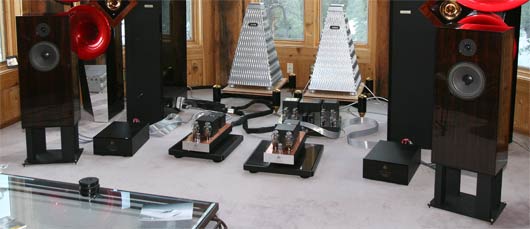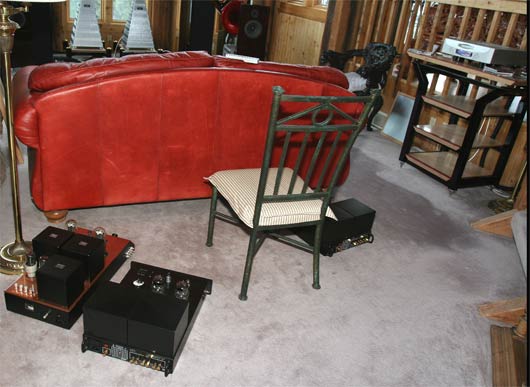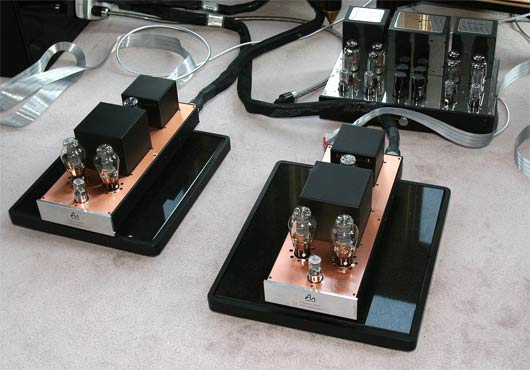For the longest time I would get so confused when I read someone posting that, say, the sound of Boulder solid-state amps had more detail than Edge solid-state amps, which I totally disagreed with [this was back when I believed everybody who posted about how something sounded had actually heard the darn thing. How innocent we all were about the side-effects of anonymity on the web in those good-old days].
I finally figured out that they were talking about the the ‘leading edge’ of the notes, combined with, in this case, less continuousness which made the notes ‘stand out’.
If we think about the sound as composed of many notes, and each of those notes having texture [dynamics of things happening inside the note] and harmonics, we can compare sounds to, say, sand on a beach.
You got your fine sand, you got your larger grains, which when large enough are ‘pebbles’. You got [depending on the beach] larger pebbles that eventually get so be as to be rocks [boulders, boulders would be like the cannon shots in the William Tell Overture]. Each one of these grains is a different shape, with bumps and different colors all over them.
OK.
The Edge amps have lots of finely grained sand detail [which we now call finesse – to get around the problem that people do not agree on just what detail *is*.] and the Boulder has pebbly detail.
The music has some of both [usually], large and small, and we can think of the sand->pebbles->rocks being dynamics and the color of their facets being harmonics/tone.
Solid-state equipment tends to reduce the beach to black and white and tube amps turn up the color saturation a bit. Solid-state equipment also shines a light on the beach like high-noon in death valley [the edges of the pebbles appear sharp, the find sand disappears into the background of white glare], tube equipment like, like, … ambient sunshine on a beach right after a rain just when rainbows are starting to come out [makes you think I like tubes better than solid-state, huh :-)].
[So far, we have only modeled sound and its harmonics and dynamics by comparing it to the visual appearance of a beach. We can also think about the experience of *listening* to sound with that of walking on the beach… some people want a nice soft sandy walk, some want a rougher, firmer walk. Some don’t care and are only getting exercise or going for a swim.]
We can think of playing music, then, as taking a yardstick and scraping it across the sand, larger pebbles being more dynamic than smaller, the colors of the pebbles representing different tones.
So, using these models…. we can [try to!] define:
Dynamic Resolution: Numbers of different sizes of sand that a system is capable of rendering – higher resolution systems are able to make a particulate of sand sound different than a slightly larger one, which would sound the same on a lower-resolution system. Note that this is often a function of the size of the grain: i.e. two boulders, one inch different in size may sound the same, but two pebbles, one inch different in size would sound different. The best systems are linear… if the pebbles, boulders are more than, say, 1% different in size, we can hear them.
Fractal Dynamic Resolution: The smallest size of a facets on a reference sized particulate of sand that a system is capable of rendering. We want linearity similar to that described above. This indicates the dynamic resolving capability of the system while it is already reproducing another dynamic. Very few systems can do this at all.
Harmonic Resolution and Fractal Harmonic Resolution: Similar to the above, but for tone [frequencies] instead of dynamics. The Lamm ML3 has really good Fractal Harmonic Resolution – it can render not only the colors of fine sand, but of their facets as well.
Dynamic Detail [ability to change direction]: the cleanliness of the beach [i.e. how much mud :-)]. Is that yardstick we are using make some good THWACK sounds as we hit things, or does it kind of slide up and over them. Again we want this to be linear – to behave the same for larger rocks and tiny particles of sand. Otherwise certain dynamics [horns anybody?] and frequencies [tipped up midrange anybody?] are over / under-emphasized. [We, Neli esp. usually calls this ‘light on its feet’. Most people referring to detail are talking about only the leading edge this very small set of dynamic changes somewhere between micro-dynamics and macro-dynamics – i..e kind of small sized next to slightly but noticeably larger pebbles. Not sand, and not rocks].
Dynamic Control [accuracy]: the ability to accurately trace the edges of the sand/pebble/boulder [what we usually call the note envelope]. That yardstick traces the pebbles up and over, without going too high, without pushing the pebble down into the sound … AND without jumping down too quick and missing tracing all the detail on the other side.
Fractal Detail and Fractal Control. Same as the above two, but for facets. The Audio Note Kegon Balanced amps are great at Fractal Dynamic Control.
Harmonic Detail and Harmonic Control: and Harmonic Fractal Detail and Harmonic Fractal Control: same as above, but for tone [frequencies].
See, we all knew that the reproduction of music was a beach.. 🙂














